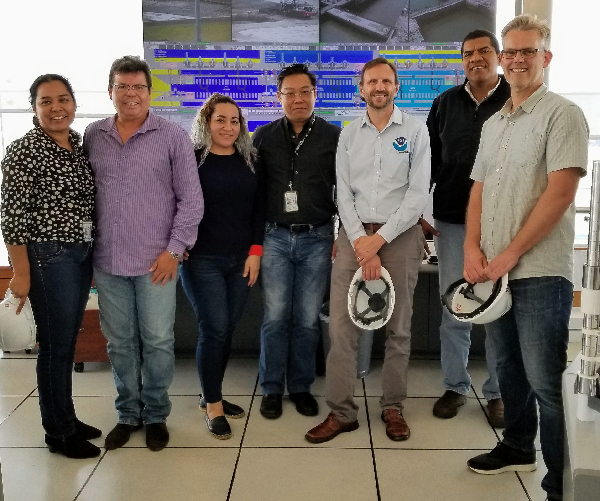NOAA Scientists Provide Training and Modeling Support for the Panama Canal Authority (ACP)
MAY 28, 2019 — Oceanographers Christopher Barker and Dylan Righi visited the responders at the Sección de Respuesta a Emergencias (Emergency Response Section), ACP (Panama Canal Authority) May 21-23 to provide training and support for an updated version of NOAA's General NOAA Operational Modeling Environment (GNOME) model for the Panama Canal.

In June 2016, the Panama Canal expansion project was completed, expanding the capacity of the canal with two new sets of locks. The expansion project involved multiple changes to the canal and its approaches, and the management of water in the canal system. NOAA is working with ACP staff to update oil spill models developed before the expansion project to accommodate the changes in shoreline and water flows.
While in Panama, Dylan and Chris met with the ACP's hydrographers, meteorologists, hydrologists, and navigation support to better understand the operation of water flow in the canal, and gather data necessary to calibrate the oil spill models.
In addition to gathering data, Dylan and Chris gave lectures on oil chemistry, properties, weathering, transport and modeling to the ACP response personnel. This visit was part of a long standing relationship between the ACP, NOAA and the US Coast Guard to support spill response preparedness in the Panama Canal.
For more information, contact Chris.Barker@noaa.gov and Dylan.Righi@noaa.gov.
